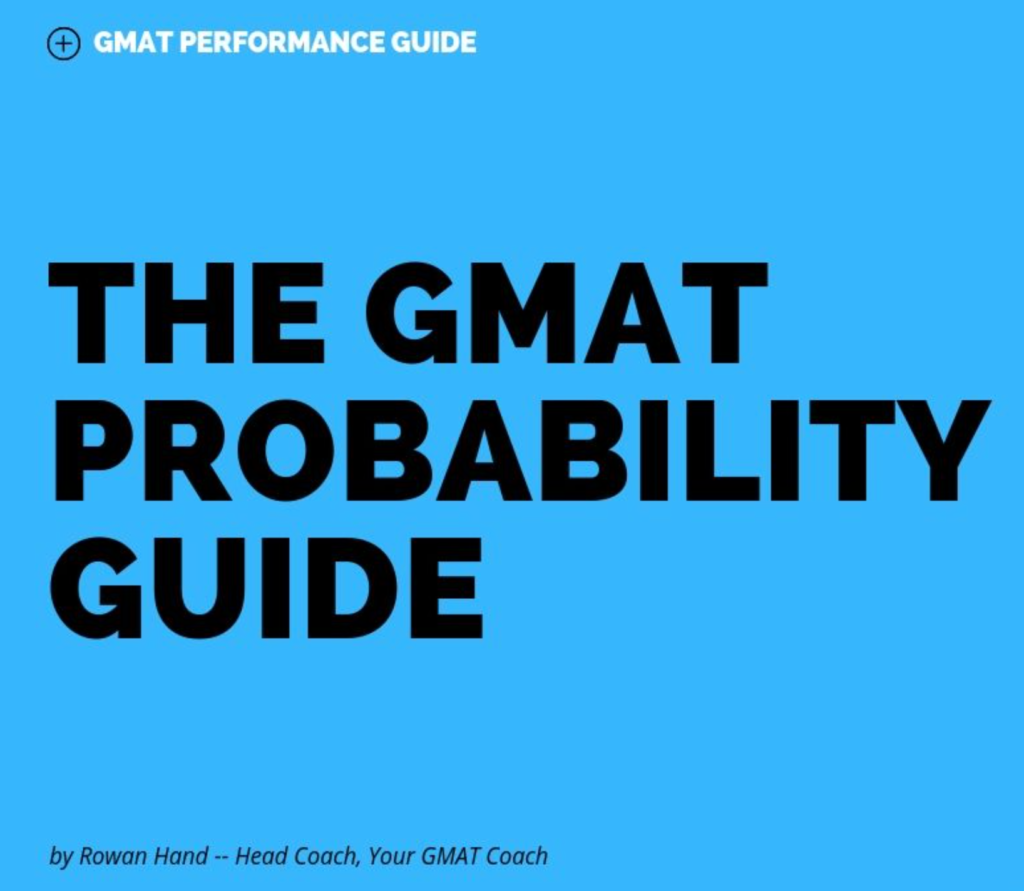Collapsing Probabilities in GMAT Probability
Unsurprisingly, there’s more than one way to look at this phenomenon. Let’s take a look at this straightforward case…
Bag 1 contains forty marbles numbered consecutively from 11 to 50. Bag 2 contains fifty marbles numbered consecutively from 41 to 90. If one marble is selected from each bag, what is the Probability that the two selected marbles will share the same number?
Let’s start with this: how many marbles cross over between the two bags? Easy: it’s the marbles 41-50, or ten marbles.

It’s straight shooting to see that the Probability for the first draw is simply these ten divided by the 40 total in the bag:
10/40=1/4
Next, we have to pull another marble. Now, on the surface the next bit might seem obvious: the crossover is still ten, right?
This is where things get interesting.
We’ve actually chosen a number already, haven’t we? Let’s say, for the sake of argument, that this is “43,” which I’ll put in quotes so we know that it’s the number painted on the ball and don’t accidentally do any calculations with it. It’s not a number in a normal sense, just what’s painted on the damn marble, OK?
So let’s say that in that first pull we pulled “43.” That means that in the second pull, we need to pull “43” yet again. But how many of the balls in the second bag are “43?” Yes, you’re correct! Only one.
That means that the second pull, we have a Probability of simply 150. In a sense, the selection in the first pull collapses the Probability for the second pull. Now instead of having the full ten choices, we now have only one choice.
With this in mind, we see that the total Probability is therefore:
(10/40)*(1/50) = (1/4)*(1/50) = 1/200
This is the way that I’d personally think about it, but I realize that the idea of the “collapsing” Probability might make smoke come out of some people’s ears.
Sensitive to that, let’s look at a more practical, slightly longer, but definitely less intuition-based solution to the same question:
Bag 1 contains forty marbles numbered consecutively from 11 to 50. Bag 2 contains fifty marbles numbered consecutively from 41 to 90. If one marble is selected from each bag, what is the Probability that the two selected marbles will share the same number?
(No change in the wording–I’m providing it again so you don’t have to flip back…)
Now, let’s imagine that we select that “43” from Bag 1. What’s our Probability here? There’s only one “43,” so it’s…
1/40
Now let’s look at Bag 2. There’s only… wait for it… one “43” in this bag, as well. That makes the Probability…
1/50
HOWEVER, at this point, remember that the point where we selected “43” was actually before we had done any of the actual choosing of marbles. Because of this, we know that there’s only one matching marble in each bag.
Given this, the case that we would choose “43” itself is this:
(1/40)*(1/50) = 1/2000
Even so, remember that according to the question we actually have ten potential numbers that would work (that is, anything between 41 and 50). Given this, we’re not inherently, absolutely, necessarily looking for “43.” There are actually ten numbers that work.
That means that we’re actually considering this “43” as a sample case of one of the ten possibilities. To figure out the Probability of getting one of these ten, we simply need to multiply this number by ten! That is…
10*(1/40)*(1/50) = 10/2000 = 1/200
Notice, of course, that we get the exact same result as before. I mean, we should, right? It would be a problem if we didn’t.
Here are the rest of the GMAT Probability resources!
Collapsing Probabilities: Part Deux
This one I’m only doing with the Collapsing Probabilities technique. You’re welcome to do it by making your choice first, then multiplying by the number of potential choices. It’s just that I won’t. You can e-mail me if you need your hand held.
Here’s the question:
Company X employs 400 people and Company Y employs 300 people. Twenty-five people in Company X have spouses who are employed by Company Y. What is the Probability that, if we select a person from Company X and a person from Company Y, we will select a couple who are married to each other?
This doesn’t look too bad. If we’re limiting our group to the people from Company X who have spouses within Company Y, we find our Probability for the first selection to be:
25/400
Working from this standpoint, let’s imagine that Jane works for Company X and her spouse, Lydia, works for Company Y. What’s the appropriate question to ask here?
Let’s step back for a moment. This isn’t some key party taking place in a conversation pit in 1970s suburbia. If we select a married person from Company X, it stands to reason we’re selecting the spouse from Company Y. Like one single person Y corresponding to one single person X, yes?
That’s the practical meaning of “collapsing Probability.”
In essence, that makes the question clearer: What is the Probability that we select Lydia from Company Y? That presents…
1/300
Given this, we can see that our ultimate Probability is:
(25/400)*(1/300) = (1/16)*(1/300) = 1/4800
Got it? Good.
Now that we’ve covered the basics of what Probability really means, let’s look at a few specific examples.
Check out Part Deux of this GMAT Probability article here!
Like what you’ve seen here? Check out the GMAT Probability Guide here.






